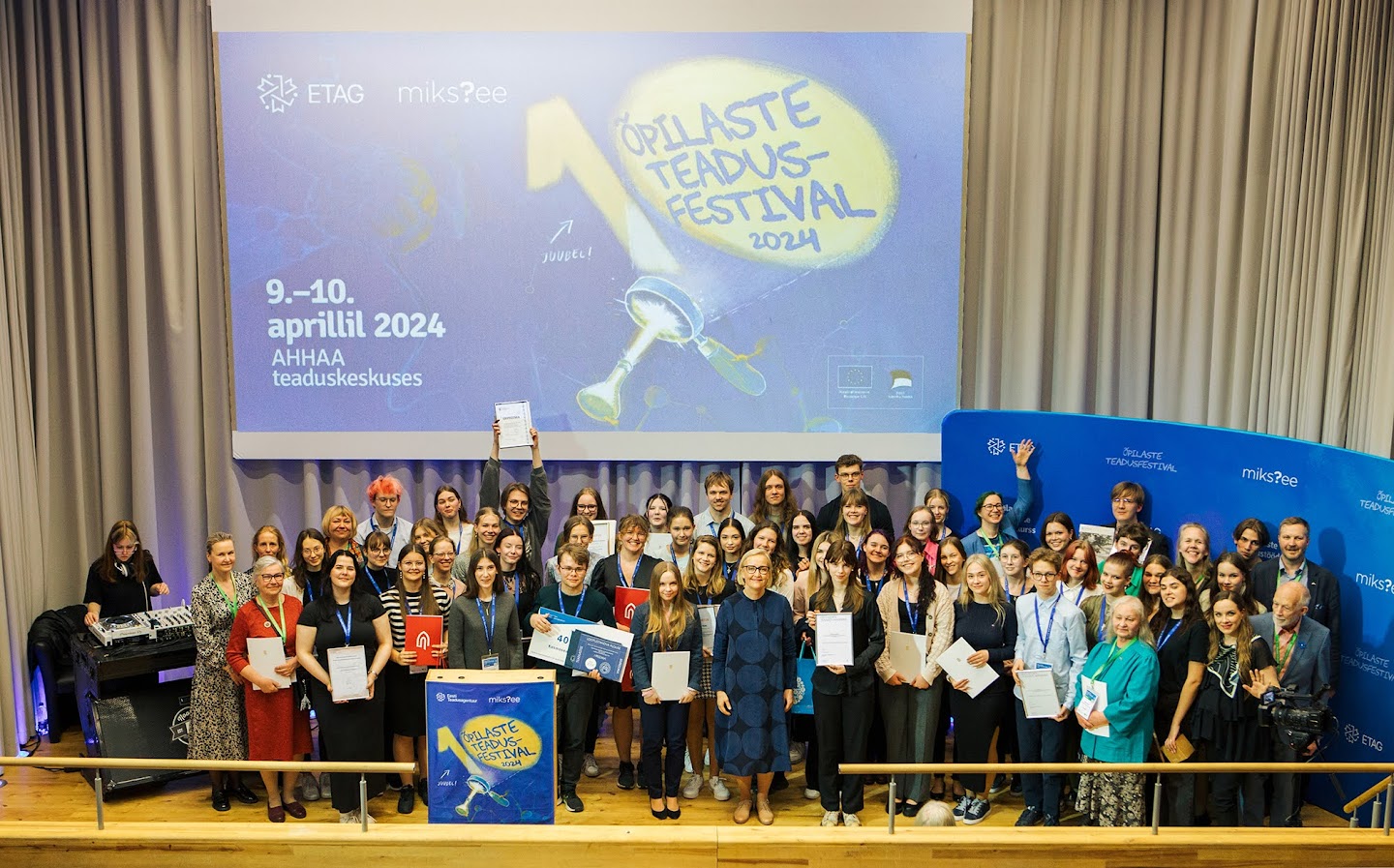
In the recent nationwide competition for student research papers, the Integration Foundation awarded a special prize for studies in the area of cultural diversity to Lümanda Middle School student Maarja-Rebeca Luhtaru and to Miina Härma Gymnasium student Merili Päike. In total, students from all over Estonia submitted 12 research papers that address Estonia's cultural diversity.
The Integration Foundation, which is leading the Cultural Diversity Year, considers it important that Estonia's cultural diversity also attracts the attention of young people. "In the similarities and differences between Estonian communities, our common cultural richness is born. The 12 research papers selected for the second round of the festival are a strong confirmation of this. Young people see the connections and consider it important to study cultural diversity in order to preserve our cultural richness, which will endure along with our country," said Dmitry Moskovtsev, director of the Integration Foundation.
Among the 12 works, there were studies on the transition to Estonian-language education, the adaptation of Ukrainian war refugees in the Estonian school system and society, Old Norse belief systems, Kihnu sleeve embroidery, the history of Estonian Swedes, the knitting of stockings in the tradition of Tarvastu ‘bag stockings’, the names of plants and animals in island dialect, the vitality of Seto culture today, the menu for state receptions as the country's calling card and the transformation of these menus over time, and the March deportation through the eyes of grandparents.
Among the research papers of the middle school, the special prize of the Cultural Diversity Year was awarded to Maarja-Rebeca Luhtaru, an 8th grade student of Lümanda Middle School, for her research paper "Knowledge of the names of plants and animals in the dialect of the islands". According to the author of the work, the biggest surprise when doing the research was that people knew the names of plants and animals in the dialect of the islands not only on Saaremaa island, but also on the mainland. "People really value and preserve their language and culture. More and more people are going abroad and learning new languages, and our native language is being lost. I think it's important that it's spoken as much as possible so that the language doesn’t disappear," Luhtaru said. Maarja-Rebeca Luhtaru was also awarded third place in the National Prize for Student Research Papers.
The winner of the special prize at the high school level was Merili Päike, a 12th grade student of Miina Härma Gymnasium, for the work "The vitality of Seto culture today". "Even though I'm from Setomaa, I didn't know much about this culture. I was able to learn more thanks to this research," she said. "Cultural diversity is very important, it adds value to our society. Research showed that Seto culture is viable. It came as a pleasant surprise that young people have started to value Seto culture more. For example, they have started to play Seto instruments and learn and contribute to the culture." Merili Päike was also awarded prizes from the Institute of the Estonian Language and the Council of Rectors of Institutions of Professional Higher Education.

All results, including special prizes, can be found on the website of the Estonian Research Council. Summaries of the research papers can be read in the competition anthology.
Photos ETAG: https://photos.app.goo.gl/77kbmSP29w1uGzGy7
Award Ceremony Video: https://www.youtube.com/watch?v=nZ620yAN2bY
The Committee of the Cultural Diversity Year evaluated 12 works, from which the recipients of special prizes in middle and high schools were selected:
- "Embroidery of Kihnu sleeves", Epp Karjam, 9th grade of Kihnu School
- "Moments from the history of Estonian Swedes around the years 1822, 1922 and 2022 against the backdrop of the story of the Rohberg family", Otto Arro, 9th grade of Loo High School
- "Knitting stockings in the tradition of Tarvastu bag stockings", Kirsi Meriste, 8th grade of Tallinn German Gymnasium
- "Knowledge of the names of plants and animals in the dialect of the islands", Maarja-Rebeca Luhtaru, 8th grade of Lümanda Middle School
- "Differences in the acoustic phonetics of Estonian and Finnish", Miia Malm, 12th grade of Pirita Economics Gymnasium
- "Compiling and conducting a language immersion project: a treasure hunt based on A. H. Tammsaare's novel "Truth and Justice", Aleksandra Morgunenko, 12th grade of the Ehte Humanitarian Gymnasium
- "Possibilities for determining regional differences in the ancient Norse religion", Karoliine Nõmmik, 12th grade of Tartu Catholic Education Centre
- "Adaptation of Ukrainian war refugees in the Estonian school system and society", Olena Predko, 12th grade of Rocca al Mare School
- "The vitality of Seto culture today", Merili Päike, 12th grade of Miina Härma Gymnasium
- "The transition to Estonian-language education: impact, challenges and aspects that need to be solved based on the example of history teachers in Tallinn and Narva", Kärt Rentel, 12th grade of Miina Härma Gymnasium
- "Estonian Republic state reception menus as the calling card of the state and the transformation of these menus over time", Maret Hallik, 12th grade of Miina Härma Gymnasium
- "March deportation through the eyes of grandparents", Ott Kahar, 12th grade of Tallinn German Gymnasium
